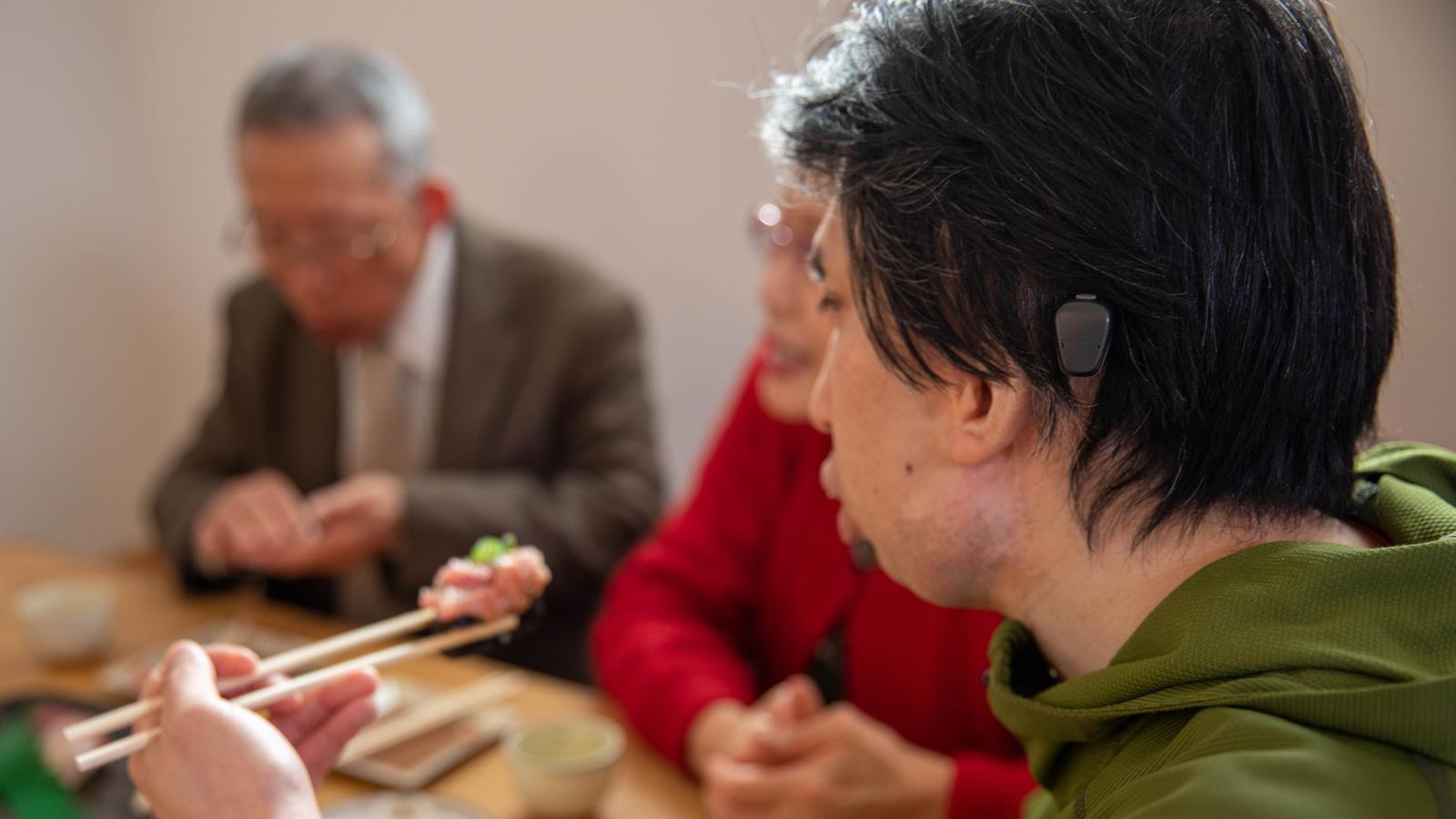How bone conduction solutions work
Did you know sound travels through the bones in your head? Learn more about how bone conduction solutions work.

What you'll find on this page
- How bone conduction implants work.
- The three parts to a bone conduction system.
What is bone conduction hearing?
There are several ways to hear. One is when sounds travel to our eardrums through the ear canal. This way of hearing is called air conduction.
Another way is when sound vibrations travel through bones in our head. This way of hearing is called bone conduction.
The vibrations bypass the eardrum and transmit sounds straight to the inner-ear, which transforms the sounds into a message for our brain.
Both types of hearing work together to help us hear and perceive sound.
How bone conduction implants work
A bone conduction implant system can bypass damaged or blocked parts of the ear and deliver vibrations directly to the inner ear. The inner ear converts the vibrations to electrical signals that the brain interprets as sound.
Bone conduction implants work by using the body's natural ability to conduct sound. They are designed for people with single-sided hearing loss, conductive hearing loss or mixed hearing loss.
There are three parts to a bone conduction system:
-
a small titanium implant that is surgically inserted in the bone behind the ear
-
an abutment or a magnet that connects the implant to the sound processor
-
an external sound processor.
Together, these parts bypass the section of the ear that isn't working, sending vibrations directly through the bone to the inner ear.
Find a hearing implant specialist near you

Disclaimer
Please seek advice from your health professional about treatments for hearing loss. Outcomes may vary, and your health professional will advise you about the factors which could affect your outcome. Always read the instructions for use. Not all products are available in all countries. Please contact your local Cochlear representative for product information.
For a full list of Cochlear’s trademarks, please visit our Terms of Use page.
Views expressed are those of the individual.
References
- Mace AT, Isa A, Cooke LD. Patient quality of life with bone-anchored hearing aid: 10-year experience in Glasgow, Scotland. J Laryngol Otol. 2009;123(9):964–968.





